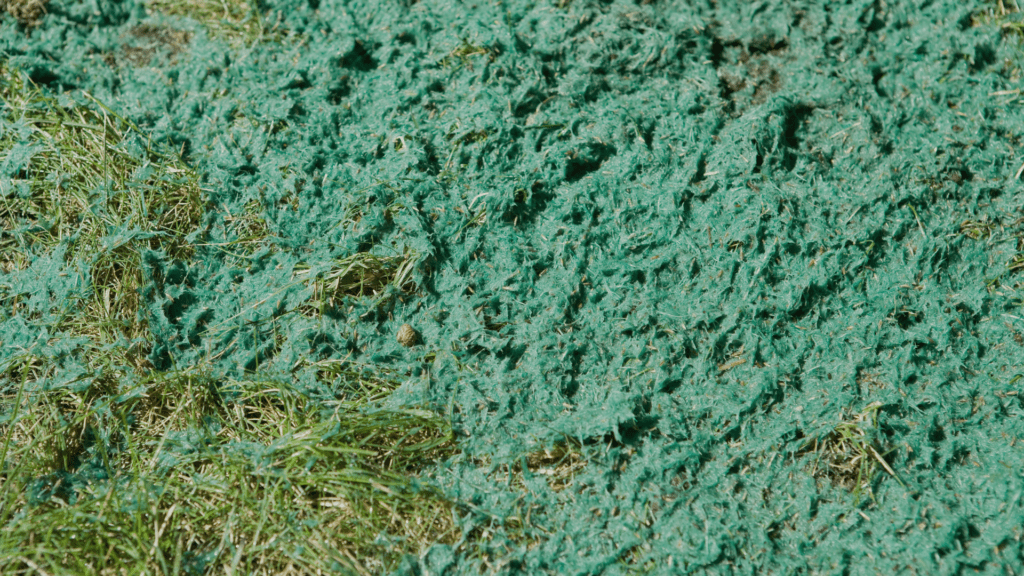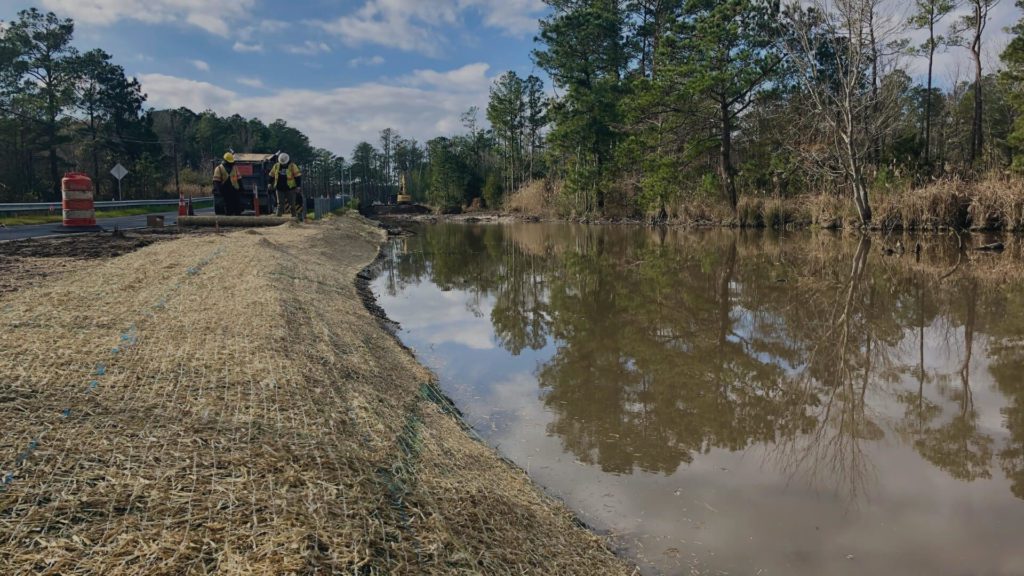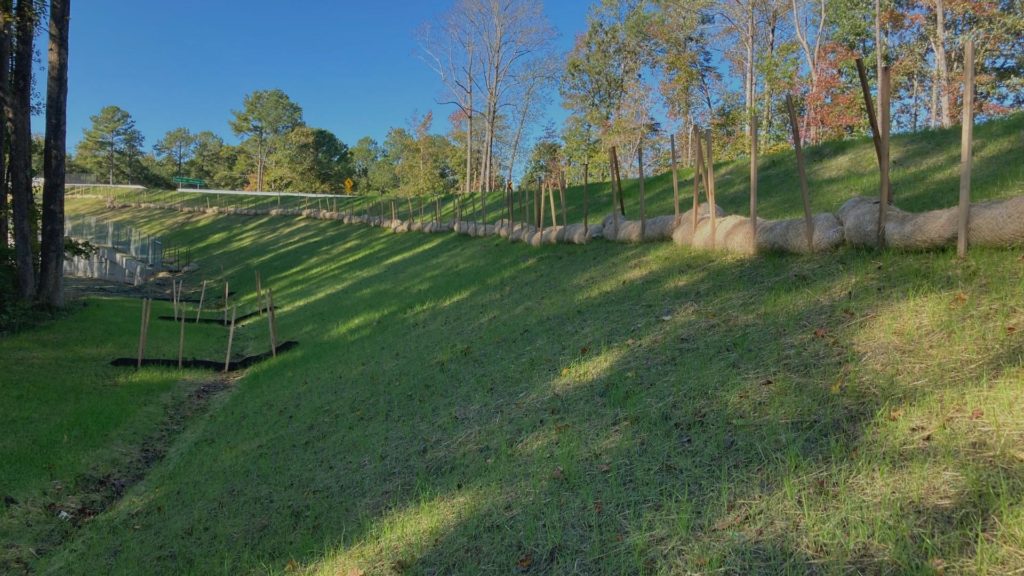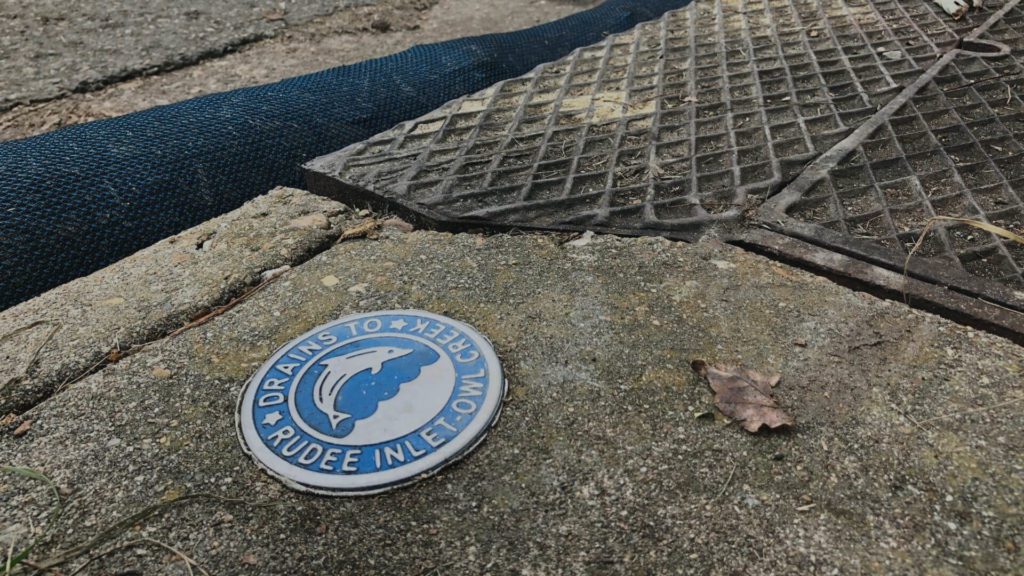31 JulHow to Prepare Your Site for Hurricane Season

The Atlantic Hurricane Season starts on June 1 and ends on November 30. Each year forecasters make their predictions about the severity of the upcoming storm season. Find out what forecasters are predicting for the 2024 season and how to prepare your construction sites accordingly.
Predictions for 2024 Atlantic Hurricane Season
The Colorado State University is one of the leading forecasters for major storms. The 2024 season is predicted to be one of the most active hurricane seasons in recent history.
| CSU Predictions | Average from 1990-2020 | |
|---|---|---|
| Named Storms | 23 | 14.4 |
| Hurricanes | 11 | 7.2 |
| Major Hurricanes | 5 | 3.2 |
Experts explain this is primarily due to the consistently above-average Atlantic water temperatures and the expectation that the current El Nino will become La Nina by the middle of hurricane season. La Nina generally brings stronger storms and unstable rising air.
While predictions can be revised and reality may fall short of expectations, it’s important for Mid-Atlantic contractors to heed these predictions and make a plan of action.
Heed the experts’ predictions and have a plan of action. Now is the time to check (or create!) a severe storm plan for your construction site.
Prepare Now for Warnings Later
Coastal projects near North Carolina, Virginia, Maryland and New Jersey may seem like the most at-risk sites, however, inland construction is not exempt from tropical weather.
Take action early to make sure your team and subcontractors are ready if warnings are issued.
Discuss flood zones, evacuation zones and routes, and emergency communication. Test back-up lighting and emergency generators.
Identify flood prone zones, sensitive areas and vulnerable inlets. If these areas need to be stabilized, protected and reinforced, put a plan in place to control erosion and flooding.
Construction Preparation for Severe Weather
Severe storms can result in severe erosion and uncontrolled runoff. Warnings are typically issued days before landfall so if you have time to prepare, take the following steps to mitigate erosion before the storm.
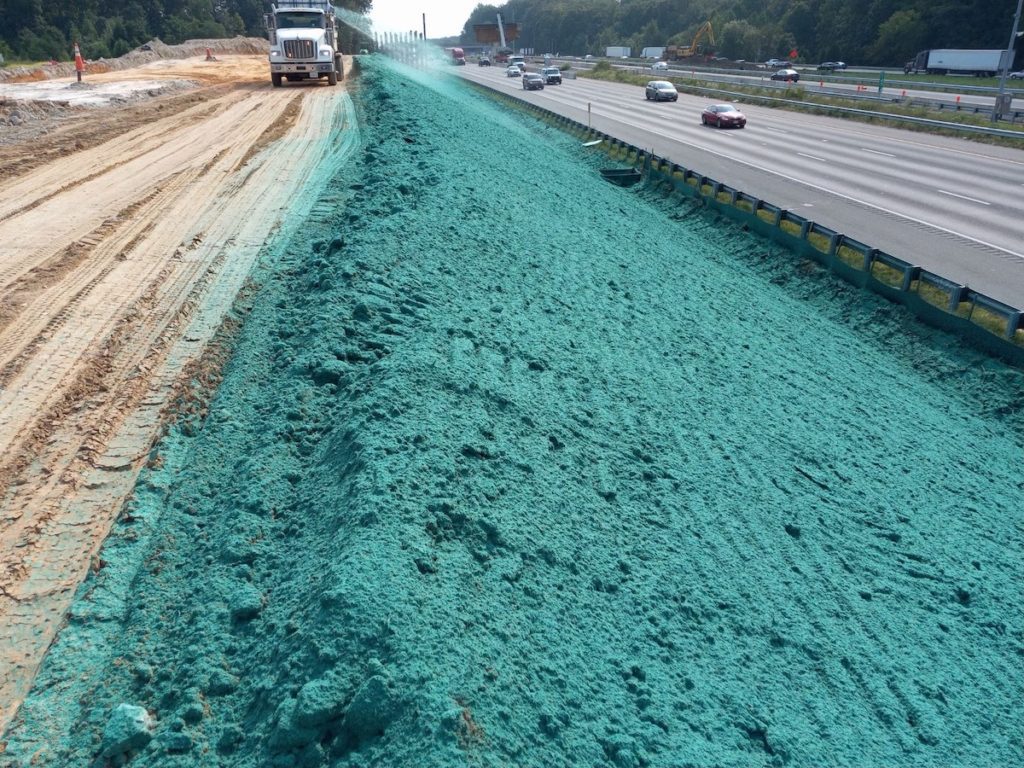
Hydroseed to Stabilize Soil
Quickly stabilize disturbed ground by hydoseeding.
For the hydromulch, we recommend 100% Cellulose for fast, temporary and economical ground cover. 100% Cellulose Hydromulch, also known as paper mulch, is ideal for slopes with grades less than 4:1.
For steep slopes and greater protection, you may want to consider a high-performance hydromulch like EarthGuard Fiber Matrix which is proven to reduce soil loss.*
*Test results from a a 1 hour, 4-inch rain event.

Install Temporary Erosion Control Blankets
If hydroseeding isn’t the right solution for your site, consider installing Short-Term Erosion Control Blankets. These rolled erosion control products are cost effective, easy to install and readily accessible.
Short-Term Erosion Control Blankets like Straw Matting protect disturbed ground in order to prevent soil loss. Erosion Control Blankets protect the soil from precipitation and absorb the impact of rainfall. Install erosion control matting on slopes, channels and ditches that are vulnerable to soil loss.
Typically, we would suggest you seed in conjunction with hydromulch or erosion control blankets. However, it is likely that after the storm passes you will be back to work in these disturbed zones. If you expect to continue earth moving after the storm passes, seeding would be a wasted cost during storm preparation.
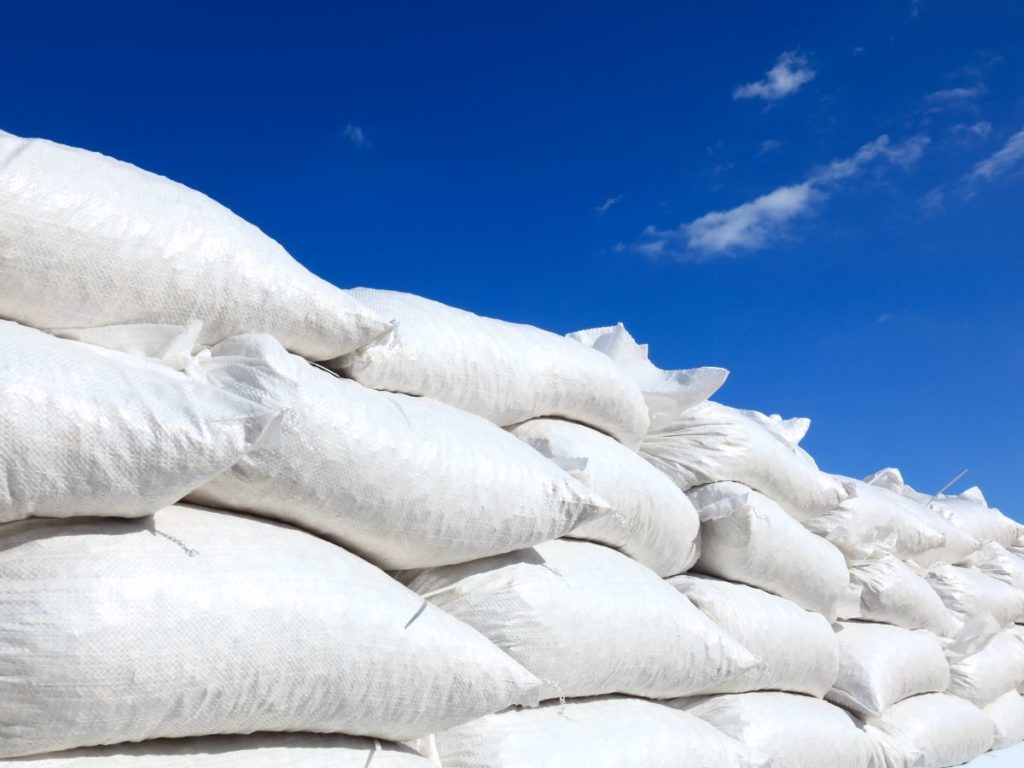
Build a Sand Bag Barrier
Excessive water can be extremely damaging to construction sites. Hurricanes can dump upwards of 15 inches or more in an area. That volume of water is difficult to manage but there are ways to mitigate flooding.
Sand Bags are one of the most common storm proofing products. They are affordable, easy to store and readily accessible at both of our locations.
Sand Bags require time and effort to fill and place strategically. Plan ahead and keep bags on hand if you’re in a high-risk severe storm zone.
Build a Sand Bag barrier around critical areas like stockpiles and trailers. While you’re at the trailer, place several bags in front of the door to seal off moisture. You should also use Sand Bags to weight signs and fence in place. This is a common day-to-day practice but it is critical to check these items before a storm, especially when high winds are expected.
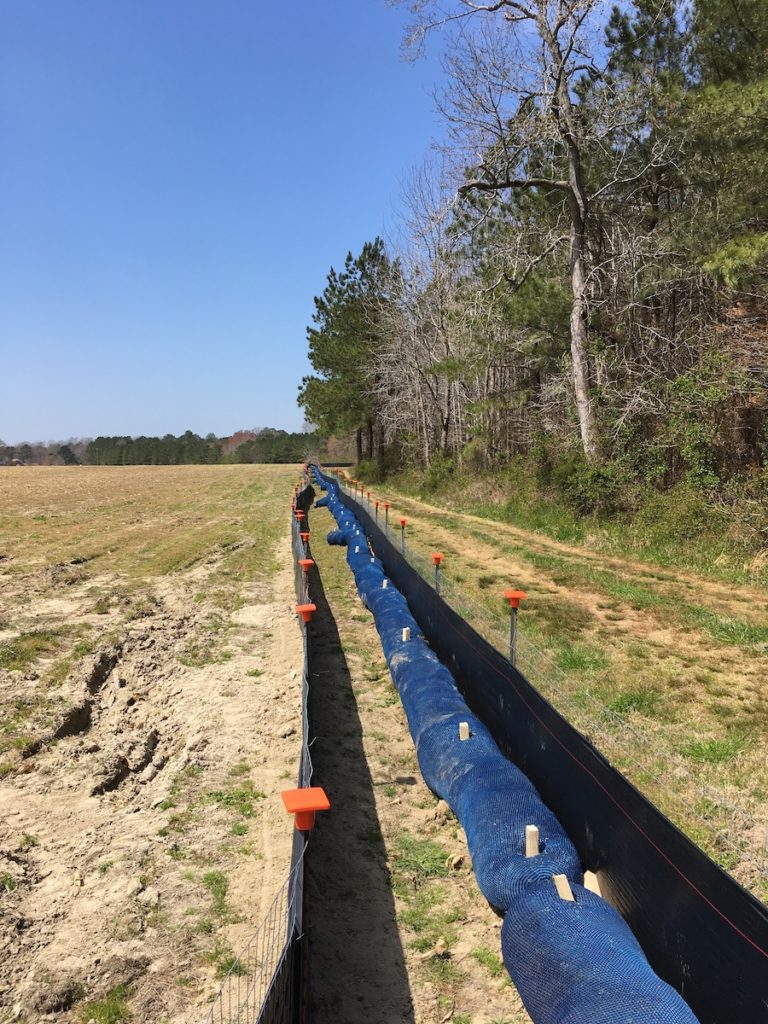
Reinforce Silt Fence in Sensitive Areas
Silt Fence is subject to blowouts and failure during severe storms. You likely already know the sensitive areas on your construction site so reinforce those areas before the storm.
For storm preparation reinforcement, we recommend adding a Compost Filter Silt Sock.
Install Silt Sock parallel to the silt fence line to add a secondary filtering device. During a major rain event, water is going to be flowing through your silt fence fabric faster than ever. Silt Sock will filter runoff before (if installed in front) or after (if installed behind) passing through the fabric. It will also bolster your fence to give additional protection against blowouts.
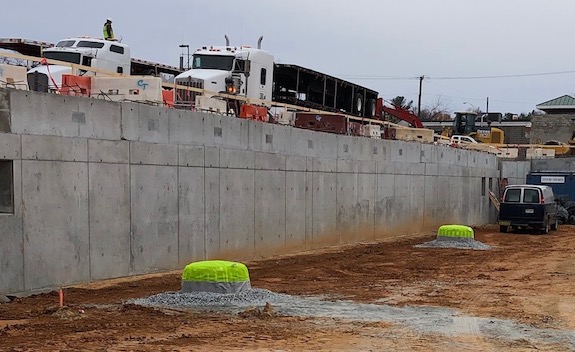
Protect Inlets and Storm Drains
Take all possible precautions to protect inlets from damaging volumes of sediment laden runoff. Guard the inlets that are at risk by adding stronger products or reinforcing the devices that are in place
We like our inlet protection domes as an better alternative to silt fence boxes because they sit on top of the structure. The Domes can be placed on inlets that haven’t yet had precast inlets set or when the precast concrete box with grate is already set.
The Round Dome is perfect for 48-inch or 60-inch riser pipe where the tops have not yet been set. Use the Square Domes for tops that have been set.
The Round and Square Domes are covered with a filter fabric. The fabric allows rain in and filters sediment from runoff. The filter and domes are weighted into place with rocks, stone or sand.
Take Action
Whether your construction site is inland or coastal, it is important to plan for the Atlantic Hurricane season.
All of these suggestions are typical erosion and sediment control practices. Chances are your site is already using some, or all, of these erosion control products. Taking the time to shore up disturbed ground, sensitive areas and inlets before a severe storm can save you tremendous time and money.
While all of these BMPs perform well in major rain events, there is still a risk that hurricane force wind and rain will wipe out some of your pre-storm preparation efforts. As soon as it is safe to return to site, inspect the damage and begin to remediate with many of the same products.
Contact us to receive pricing on any of these storm-preparation products.


